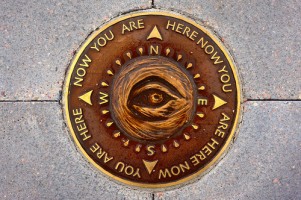 As discussed in my last post, an essential element of community engagement is being “of” the community. In order to do that, it is necessary to understand the true character, the essence of that community. There is, of course, no monolithic essence in any geographical community, but there may be commonalities that bind many of the communities in a region. Spending the time to learn these things is important and is, at least to some extent, separate from discovering the needs and aspirations of individual communities.
As discussed in my last post, an essential element of community engagement is being “of” the community. In order to do that, it is necessary to understand the true character, the essence of that community. There is, of course, no monolithic essence in any geographical community, but there may be commonalities that bind many of the communities in a region. Spending the time to learn these things is important and is, at least to some extent, separate from discovering the needs and aspirations of individual communities.
Sara Lutman’s meditation upon being “Minnesotan” (presented in Being Local) suggested what could be elements of core identity in the upper Midwest. Core identity naturally skews toward that of majority populations. Therefore only those things that are as universal as possible should be considered. A region’s geography, climate, history, cultural expression, and, yes, athletic teams offer such opportunities. With respect to history and cultural heritage, however, it must be remembered that different subgroups may have profoundly different attitudes. In the South, for instance, the slave, poor white, and slave owner experiences have created, in their descendants, vastly divergent views of the region’s history.
The answers to the questions below are but one sampling of things that might be addressed in efforts to become more locally oriented.
When you think of our [city, state, region] what are the most important things that come to mind about:
Geography
Climate
Regional History and Historic Events
Cultural Expression and Heritage
Creative Legacy (e.g., artists and inventors)
Food and Drink
Character of the people
Athletic Teams
Creating listening sessions in which an organization asks such questions serves to obtain the answers and demonstrate to the community that the organization is serious about deepening its commitment to community focus. The ways such knowledge can be put to use in programming decisions are as numerous as the communities of which the questions are asked and the types of organizations that might ask them. The only real limits are the imagination and will of those doing the programming.
Engage!
Doug
Photo:![]()
![]() Some rights reserved by cibomahto
Some rights reserved by cibomahto

[…] | Published 2014-09-25 The Roots of Author Jeff Hobbs AJBlog: CultureCrash | Published 2014-09-24 Learning to Be Local AJBlog: Engaging Matters | Published […]